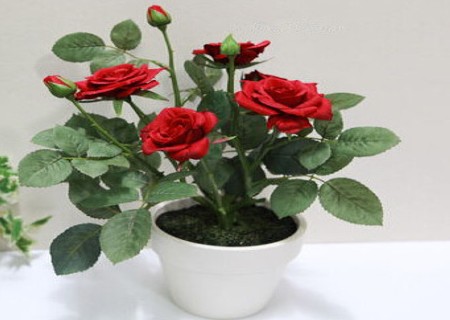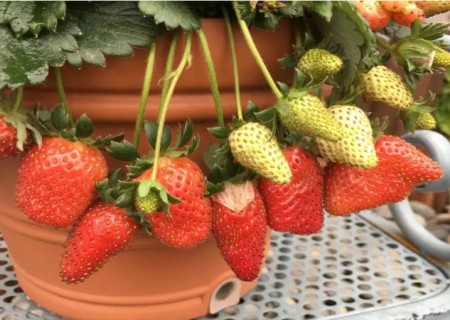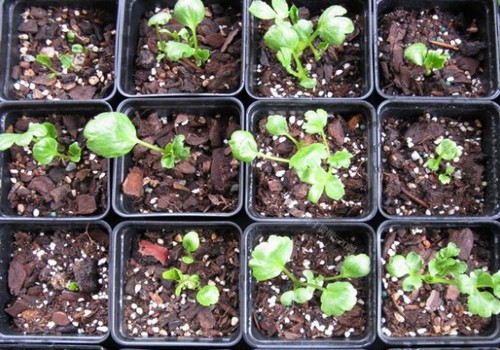How to plant potted roses
Roses are messengers of love and inheritors of feelings. Every girl likes to receive roses from a loved one, which is not only a kind of love transmission, but also a kind of happy enjoyment. Therefore, roses often play an important role in our lives. If you can't express your love in words, then you can use roses to help you convey your love. It's not only romantic, but also sweet.

Roses are praised by many people for their own fragrance, especially red roses. When potted roses can survive, the key is to master the planting method. So, how to plant potted roses? Today, the editor will share with you how to plant potted roses.
I. preparation of basin soil
Potted roses like my loose and well-drained soil environment. Here, the editor recommends several soil matching schemes: 7 parts of waste soil and 3 parts of river sand; 6 parts of dry river sand and 4 parts of honeycomb cinder; 7 parts of vegetable garden soil, 2 parts of honeycomb cinder and 1 part of river sand. These are all good soil allocation schemes.
Second, the time of potting.
The transplanting time of potted rose seedlings should be after the defoliation in early winter or before sprouting in early spring, because the survival rate of most potted flowers is much higher than other seasons, and so are roses.
III. Transplant process
The propagation of roses is mostly carried out by cutting, which can grow into new young plants after about 1 month, and can be transplanted after a year. When transplanting, first loosen the soil around the young plant, be careful not to hurt the root system of the plant, and then take out part of the old soil and then implant it into the new basin. Young roses with old soil are more likely to survive.
Fourth, timely watering
Watering is the most commonly used means in the management process of flower growers. Watering must be decided according to the dry and wet condition of the basin soil. Usually adopt the principle of "dry and wet", but to avoid stagnant water in the basin, otherwise it will cause rotten roots and affect growth.
5. Appropriate amount of fertilizer
As the nutrients in the potted soil are limited after all, it is necessary to supplement some nutrients for the potted plants at an appropriate time, generally through fertilization and topdressing, and choose more scientific and reasonable compound fertilizers with the ratio of nitrogen, phosphorus and potassium. When applying fertilizer, first loosen the soil, then bury the fertilizer in the basin soil, and then cover the soil. Then pour enough water to dissolve and dilute the fertilizer, which is more conducive to the full absorption of the plant.
VI. Pruning and plastic surgery
In order to keep potted roses in good posture, we need to prune them frequently, generally by cutting off dense branches, flowers and weak insect branches, so that they can keep beautiful plant shape and blossom more at the same time. Produce high-quality flowers. And picking flowers is very important, if the flowers are not properly removed after blooming, they will often bloom only once.
Change the basin at the right time
Potted roses generally need to change the soil once a year, and when changing pots, they should be properly trimmed and cut more than the coiled roots, which is more conducive to plant growth, and the blooming flowers are more gorgeous and larger, with higher quality.
Note:
1. The planting time of potted roses should be after falling leaves in early winter or before sprouting in early spring.
2. The management of water and fertilizer is very important, and watering should be decided according to the weather conditions and the dry and wet condition of the basin soil; fertilization is generally applied with thin and completely mature organic liquid fertilizer about every 10 days after taking the basin.
3. After the plant enters the dormant state, the pruning treatment should be carried out in time, and the residual flowers should be removed in time after the flower fade, which can ensure the plant to grow more luxuriantly and prolong the florescence at the same time. (written by: laughing Book 2017-08-10 23:00)
Time: 2019-05-24 Click:
- Prev

How to plant potted strawberries
Many people like to eat strawberries, especially young women. Strawberries are tender and delicious, sour and sweet and juicy, and their nutritional value is also very high. it is a rare fruit with color, fragrance and aroma, which is called the fruit queen and is loved by the majority of consumers. But this kind of fruit is very expensive in the market.
- Next

How to grow buttercup
Speaking of buttercups, it really makes us love and hate. I have heard the truth of many kinds of buttercups, but I can't raise this onion well. In the end, how to plant buttercup seeds? there is a lot of theoretical knowledge about buttercup sowing on the Internet. Xiaomei specially collected and sorted out the experience of various flower friends for novice flower friends' reference. Buttercups like to be cold and cool.
Related
- Fuxing push coffee new agricultural production and marketing class: lack of small-scale processing plants
- Jujube rice field leisure farm deep ploughing Yilan for five years to create a space for organic food and play
- Nongyu Farm-A trial of organic papaya for brave women with advanced technology
- Four points for attention in the prevention and control of diseases and insect pests of edible fungi
- How to add nutrient solution to Edible Fungi
- Is there any good way to control edible fungus mites?
- Open Inoculation Technology of Edible Fungi
- Is there any clever way to use fertilizer for edible fungus in winter?
- What agents are used to kill the pathogens of edible fungi in the mushroom shed?
- Rapid drying of Edible Fungi

